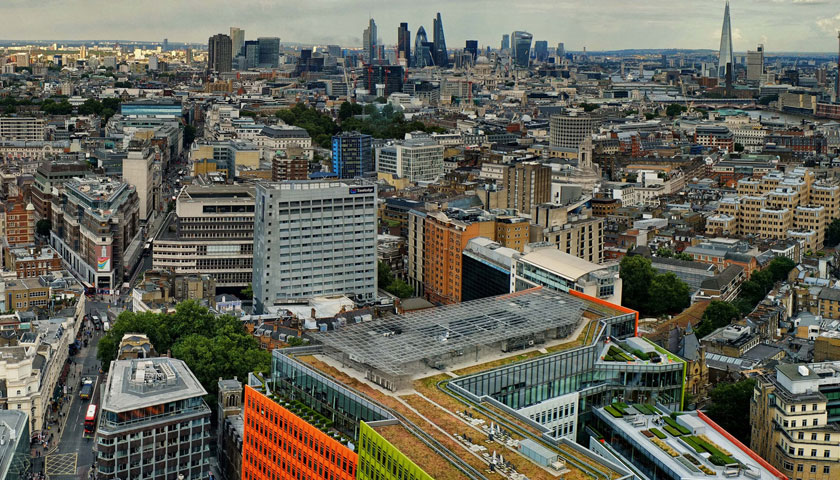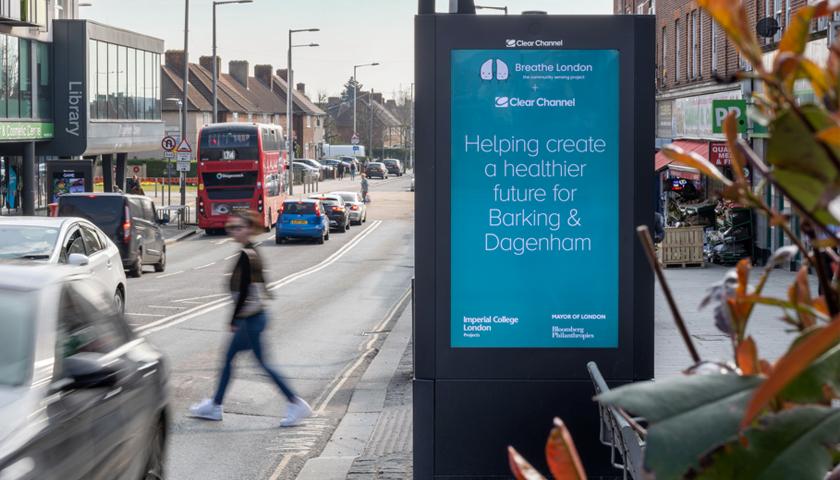The Mayor of London, Sadiq Khan, has revealed new data showing some of London’s most polluted streets as his Breathe London sensor network gives a fresh insight into the capital’s air quality crisis.
The Breathe London network highlights potential air quality hotspots, allowing solutions to be put inplace as quickly as possible and is just the latest stage in the Mayor’s ambitious programme to tackle London’s toxic air. More than 100 fixed sensors were placed in locations across the capital and found levels of pollution likely to exceed legal limits not only in central London but also outer boroughs such as Barking, Kingston and Hillingdon. The findings demonstrate that poor air quality is not only a problem for people living and working in central London.
In their first eight months of operation, high levels of air pollution were detected by 40 per cent of the Breathe London sensors, showing locations are likely to exceed the legal annual levels of air pollution. Sensors onbusy West End roads also recorded levels of nitrogen dioxide 10 times higher than on smaller streets just a few metres away. Publishing this data is an essential part of the Mayor’s open and transparent air quality agenda, allowing policy makers to take informed decisions to clean up the capital’s air and Londoners to use world-leading online tools to see real-time and past levels of air pollution in their areas.
In April, the Mayor introduced the world’s first Ultra Low Emission Zone (ULEZ) in central London, with plans to expand the zone to the North and South Circular in 2021. Since it was announced and then implemented, central London has seen a 20 per cent reduction in emissions and 9,400 fewer cars enter the ULEZ zone each day. The Mayor has also already established 10 low-emission bus zones (LEBZ) – which have led to emission reductions of up to 90 per cent in some areas – and worked with TfL to transform London’s bus and taxi fleet. The Mayor’s Air Quality Fund helps boroughs to complementsuch regional measures with effective local action.
London’s air quality is already constantly monitored at around 100 fixed locations to report scientific trends and legal compliance over the year using sophisticated modelling tools. The Breathe London sensors complement this work by helping to ensure air quality hotspots are identified. Data from the sensors supports the rationale for the Mayor’s decision to expand theUltra Low Emission Zone to the North and South Circular roads by 2021.
Measures like the ULEZ and cleaning up bus and taxi fleets are already having a positive impact on air quality along some of London’s busiest roads but theBreathe London data shows how measures to reduce personal exposure such as driving less and selecting walking routes away from heavy traffic can help to avoid exposure to polluted air. Further data from Google Street View cars equipped with mobile air quality sensors will be available later this year.
One of the benefits of the new network is its ability to highlight local issues, such as unusually elevated levels of air pollution. One hotspot identified in the data is close to a bus garage in Holloway. Whilst theintroduction of the ULEZ and transition to Euro VI and electric buses have led to a reduction in the number of exceedances at this location in recent months, Transport for London are now working with the bus operator to investigate what more can be done, including stopping buses idling outside the garage whilst waiting to park. This spike in pollution would not have been highlighted without the use of Breathe London’s sensor network and the lessons learned at Holloway can now be applied to bus garages across London.
The Breathe London team have also finished fieldwork of their ‘wearable sensor’ study, in which children across London wore air quality monitoring backpacks to school for a week to discover how they were affected by pollution throughout the day.Some 259 children and 33 of their teachers from five schools across London took part in the experiment, gathering 490 million measurements capturing detailed information on exposure to air pollution in cars, buses, trains and on foot. Full results of the study will be released in the autumn.
The Mayor of London, Sadiq Khan said: “London’s filthy air is a public health crisis that leads to thousands of premature deaths in the capital every year as well as stunting the development of young lungs and increasing the number of cases of respiratory illness. It is vital that we face up to the reality of our situation and don’t shy away from the challenges presented by this new data.
“These findings, from our world-leading Breathe London sensor network, are a stark reminder that pollution hotspots exist across London and will refocus our efforts on improving air quality for all. As we face up to the current climate emergency, I hope the success of this scheme will act as a blueprint for cities around the world to battle their own toxic air emergencies.
“But we can’t win this battle alone. The Government must take the air we breathe seriously and offer the support London needs to tackle this public health crisis.”
The Breathe London network was designed to focus in particular on understanding how vulnerable groups experience poor air quality. 33 schools had sensors installed:of these, nine schools were found to have nitrogen dioxide levels on course to exceed the legal limit for the year. Of these nine schools, eight have now received an air quality audit and a £10,000 grant from the Mayor to make improvements, whilst the remaining school will be audited by Southwark Council. An online toolkit is also available to all schools to help them identify measures to improve air quality, such as‘green screens’, ‘school streets’ (restricting vehicle access to roads outside schools as pupils arrive and leave)and improving school infrastructure. Boroughs are provided with local implementation funding from TfL to help them manage their streets and to deliver recommended transport changes, including around audited schools. Brent Council have already committed to expand the Mayor’s air quality audit pilot to 89 state schools in the borough, with 66 completed to date.
Baroness Bryony Worthington, EnvironmentalDefense Fund, Europe, Executive Director, said:“Breathe London’s new data shows that not only is air pollution is dangerously high throughout the city, but nearly half of the new monitoring network is on track to breach legal limits, putting the health of all Londoners at risk.
“Breathe London is building up the most detailed picture yet of how and when our city is being polluted. Armed with this evidence, EnvironmentalDefense Fund Europe and our partners will be calling on national leaders to drastically cut air pollution as fast as possible. Our cities can be so much cleaner, healthier and safer, and the time to act is now.”
The Breathe London project is proving how lightweight sensors can be used to create a cost-effective, reliable air quality network across a mega-city. This approach can now be replicated in cities across the world, who lack London’s existing technical capabilities.
Shannon Lawrence, Director of Global Initiatives, C40, said: “This new understanding of exactly where the most polluted areas of London are found – right down to street level – is vital to be able to improve the city’s air quality.
“No school children should be exposed to such dangerous levels of air pollution – but the reality is they are. This is why London needs theUltra Low Emission Zone – one of the most ambitious policies for improving air quality anywhere in the world. Cities around the globe are watching London closely as they work out how to tackle pollution in their cities, to protect the lungs of children and other members of society most at risk.”
The Breathe London air quality monitoring backpacks have been developed by Dyson engineers in cooperation with King’s College London.
Paul Dawson, VP for Health and Beauty at Dyson, said: “Children can take up to 30,000 breaths a day. Their lungs are still developing, which makes them vulnerable to air pollution.
“That’s why this study is so vital to better understand the exposure to air pollution on a day-to-day basis. Many of us see our cars as safe havens from traffic emissions, but as the initial results of the Breathe London wearables project show, we may be better off travelling by foot, than trapped in our vehicles with high levels of pollution.
“I hope that we see lasting and meaningful behavioural change as we become more educated about air pollution, and more empowered to make a change.”
Dr Ben Barratt,Senior Lecturer, King’s College London said: “We were amazed at the level of engagement, enthusiasm and knowledge shown by our young air quality scientists. We were also delighted to see that most of the children walked to and from school, which initial analysis of backpack data shows is the cleanest and healthiest way to travel.”
Sonia Medina, Executive Director, Climate Change at the Children’s Investment Fund Foundation, said: “Air quality affects everyone but the impacts are disproportionately felt by the most vulnerable, especially children.
“That is why CIFF is proud to support this world-leading project. Hyper-local air pollution data with radical levels of transparency is revealing the extent and sources of the problem. This in turn tells us what needs to be done and where. We hope this project will tackle air pollution for children in London and act as inspiration for other cities around the world.”



